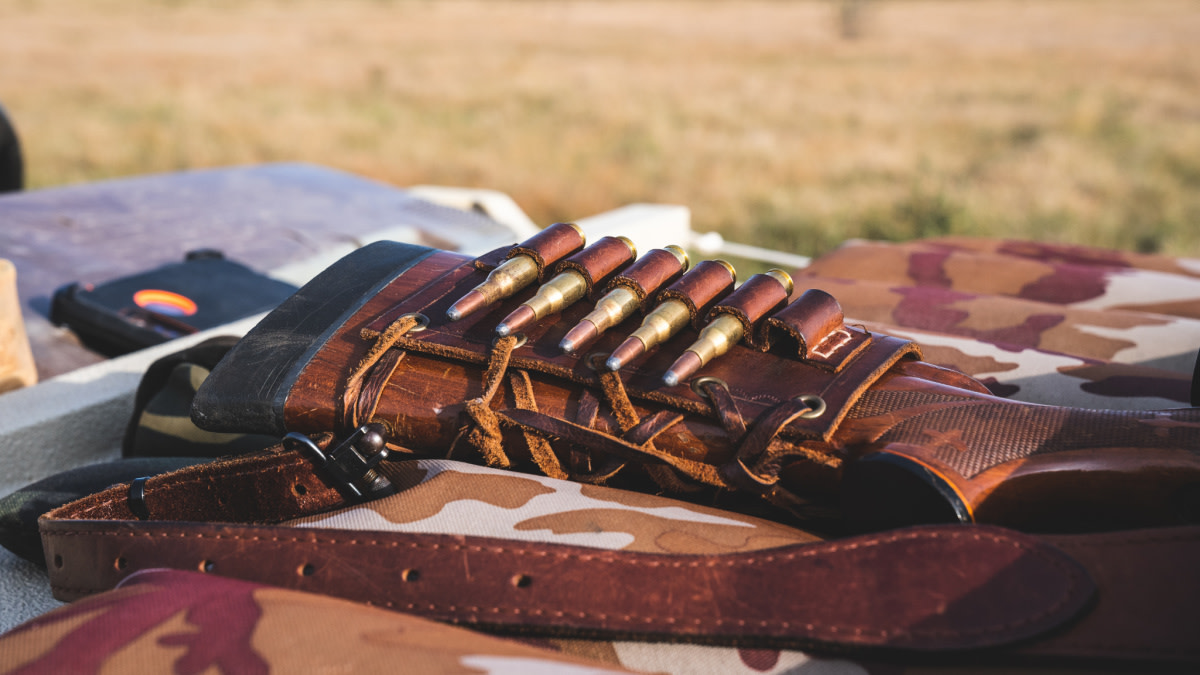
Does the gun you use on deer have too much power? The answer may be more complicated than it sounds.
Is your deer gun capable of taking a whitetail quickly and cleanly with minimal meat damage? Yeah, probably. Are you capable of using your deer gun to take whitetail quickly and cleanly with minimal meat damage? Maybe, maybe not.
Let me explain.
Shot Placement, Recoil, and You
Here’s an uncomfortable truth for those of us (myself included) who enjoy the jolt of adrenaline that accompanies discharging a big caliber: It’s hard to shoot those big guns accurately. I’m not saying it’s impossible. It’s just more difficult.
Big calibers produce a sharper recoil impulse and a louder report than small calibers. It’s also a general rule that recoil impulse and shot volume can cause shooters to flinch, blink, stop breathing, and all other manner of twitches, ticks, and sore appendages.
These flinches and ticks upset shot placement, which is far more important than caliber when it comes to bringing home game. Shooting a whitetail in the hindquarters or guts with a large caliber might put the deer down… eventually. But you also might lose more meat than processing the animal is worth. Making a vital hit with a smaller caliber that you can shoot accurately is almost always a better option.
I’m not saying that you can’t hit a whitetail on the run at 500 yards with your .30-06. It’s certainly possible. But if you’re having trouble getting clean hits on your deer, don’t blame the wind, the cold, the sun, or your hunting partner’s nonstop blathering.
Your deer rifle might not be overkill in the traditional sense, but it might be overkill for you. This year maybe try stepping down from a .30-caliber rifle to a 7mm, 6.5mm, or .243. You won’t have to worry as much about recoil and shot report, and you’ll be able to get in lots of practice without developing a sore shoulder.
Overkill?
There is such a thing as literal overkill, of course. I wouldn’t recommend going after this year’s whitetail with a .50 BMG or a Sherman tank.
But, if we’re thinking about ballistics rather than the guy behind the trigger, the type of bullet you choose matters far more than the diameter of that bullet.
Those of us with MeatEater have shot deer with everything from a .223 Rem. to .375 CheyTac. We’ve found that if we avoid bone, get a clean hit on the vitals, and choose the appropriate bullet, meat damage is minimal.
Especially for larger calibers, avoid bullets that fragment and produce a large exit wound. Instead, look for an all-copper bullet that expands and causes catastrophic damage without basically exploding inside the animal. Provided good shot placement, that will get you the results you want no matter the caliber. (If you’re looking for a solid copper bullet load, check out the MeatEater line of hunting calibers from Federal.)
Even with super-large calibers like the .500 Nitro Express, you can keep meat damage down by choosing a solid bullet that produces a straight-line hole rather than an expanding wound cavity. I’d stay away from that one (and other huge calibers) for the recoil/shot placement reasons described above, but from a ballistics standpoint, it’s tough to find a caliber that’s too big to bring home venison with the appropriate bullet.
Underkill?
Recoil impulse and bullet construction lose some of their value when we start talking about small-caliber rifles. A .22 LR has almost no recoil, but even with the best hunting bullets, I wouldn’t recommend the cartridge for whitetail.
The real debate about underkill centers on the .223 Rem. Thousands of whitetail have been taken with the .223 Rem., and no one can claim that the caliber is incapable of putting down deer. If it’s all you have, get a solid copper bullet, be sure of your shot placement and effective range, and go get some venison.
But, if you have a choice, we’d recommend something a bit larger. Bumping up to a .243 Win. or a .25-06 provides some cushion for less-than-ideal shot placement if the animal moves unexpectedly or the wind starts gusting. These slightly larger calibers are more expensive, but the added terminal ballistics are worth it.
Last Shot
If I had to choose a range of calibers for a deer-only rifle, I’d go with something between .243 Win. and 7mm. This range provides the benefits of manageable recoil and limited shot report as well as reliable terminal ballistics using a wide range of available bullets and loads.
As someone who has always hunted deer with a .308 Win., I’m hesitant to exclude the reliable old .30-caliber rifles. These calibers aren’t “overkill” as long as you can put shots on target. But an afternoon of practice at the range with a .308 Win. will always be less comfortable than with a 6.5 Creedmoor. These medium-sized calibers are more than capable of taking down deer.
Is your deer rifle overkill? That depends on you. But it’s never a bad idea to reevaluate your rig, and you might find that a smaller caliber is just what you’ve been looking for.




